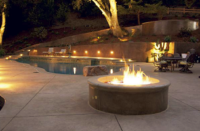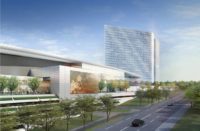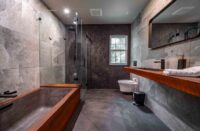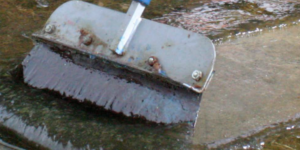Most of the requirements in the IGCC that could apply to decorative concrete are not really that new, and often they are things you already do.
402.3.2 Stormwater management — This requires all rainfall to be managed on-site, which will give a big boost to pervious concrete hardscapes. There are some interesting decorative options emerging for pervious.
402.3.6 Building site waste management plan — This requires recycling or salvaging of not less than 75 percent of land-clearing debris and excavated soils.
403.1 Walkways and bicycle paths — These must connect to existing paths or sidewalks, and they must support storm-water management infrastructure, including pervious pavement.
404.2.1 Site hardscape materials — Hardscapes must have a Solar Reflectance Index of 29, which light-colored concrete does. Pervious concrete pavements are automatically deemed to comply.
406.6 (2.4) Landscape, soil and water quality protection plan — This requires contractors to prevent runoff from leaving the construction site, including concrete wash water.
502.1 Construction material and waste management plan — At least 50 percent of construction waste must be diverted from landfills.
503.2 Material selection — At least 55 percent of the total building materials used in the project, based on mass or cost, must be recycled materials or locally produced.
505.1 Building service life plan — This requirement provides concrete with an advantage because of its long service life. IGCC requires a minimum service life of 60 years with an option to upgrade to 100 or even 200 years.
601.3 Minimum requirements — Buildings need to comply with the International Energy Conservation Code. Concrete is a good choice for its air-tightness in walls and thermal mass as flooring.
608.7.1 Buried piping — Domestic hot water pipes in or below a slab must be insulated.
804.2 Radon mitigation — The IGCC has a long section on radon mitigation and a table of the counties where the section applies. If you work in one of those counties, you’ll need to install a radon mitigation system under any slabs, consisting of a minimum 6-mil polyethylene membrane (I recommend 10-mil minimum) on top of the subbase materials, polyurethane caulk around any slab penetrations (such as pipes), sealing of all joints (control, isolation, construction), and vent pipes within the subbase that terminate above the roof.
805.1 Scope (in Asbestos Use Prevention section) — Any materials containing asbestos are prohibited.
806.2 Adhesives and sealants — The VOC maximum for architectural sealants is 250 grams per liter.
806.3 Architectural paints and coatings — The VOC maximum for concrete curing compounds is 350 grams per liter and for concrete and masonry sealers is 100 grams per liter.
806.4 Flooring — Here’s where concrete floors have an advantage, since 85 percent of an interior floor area must meet VOC requirements, but concrete flooring is simply “deemed to comply.” The same goes for concrete wall systems in section 806.5.
807.1 Sound transmission — This section offers another advantage for concrete, since concrete walls are naturally more sound-resistant than wood-frame walls.















